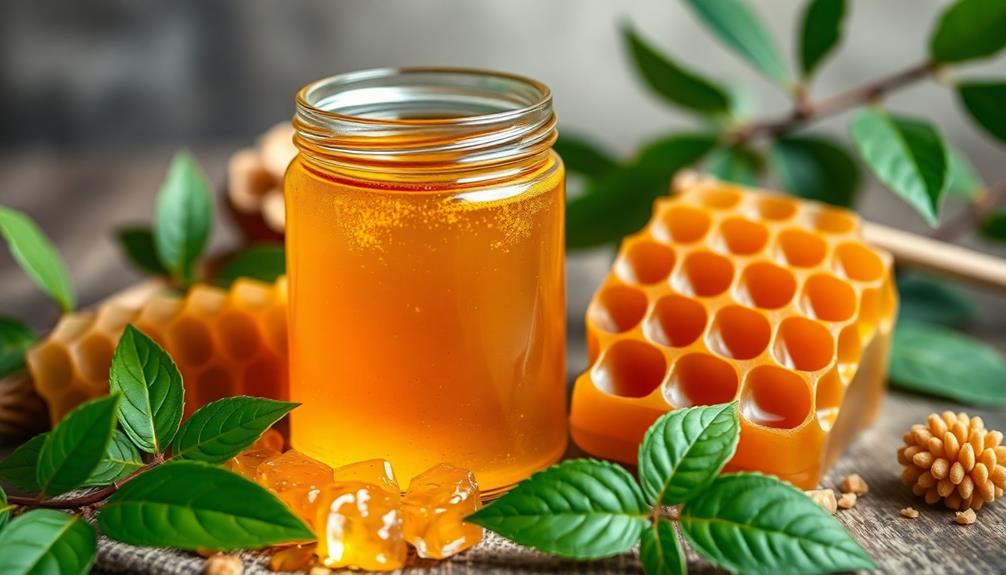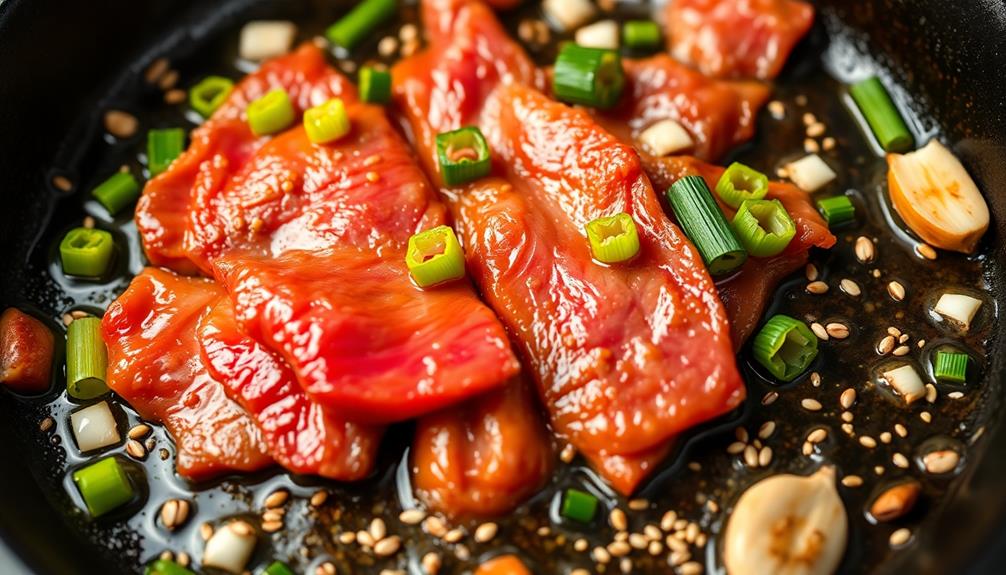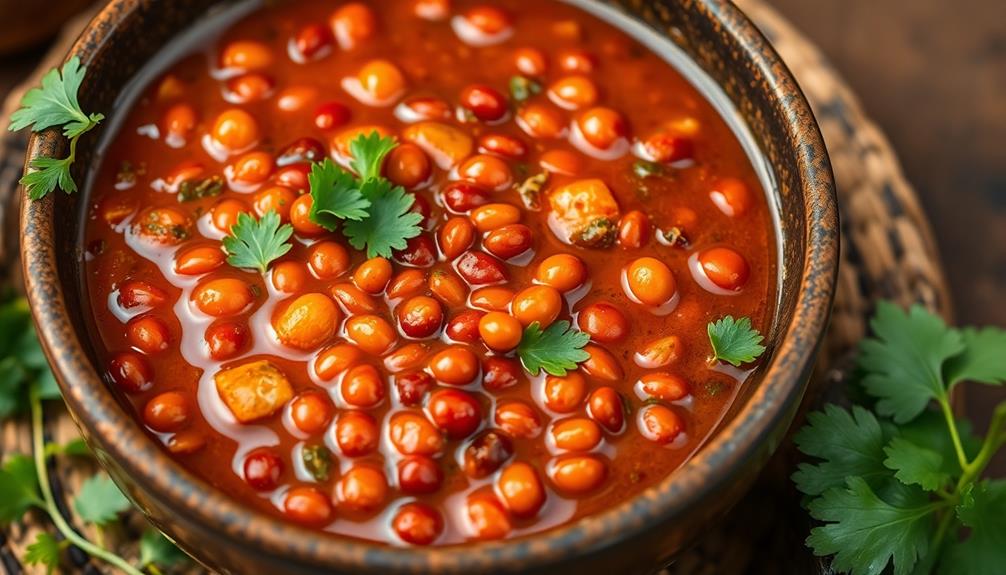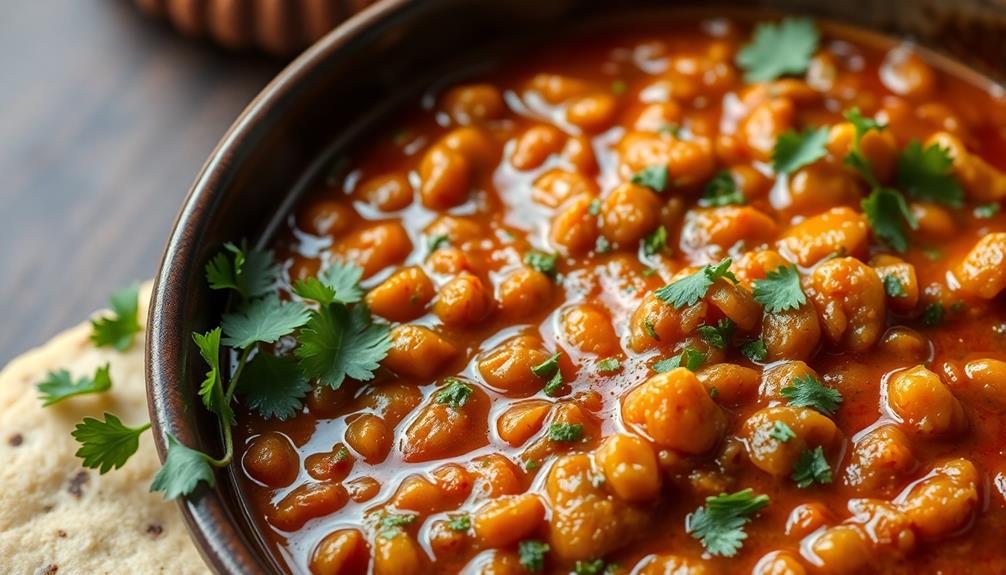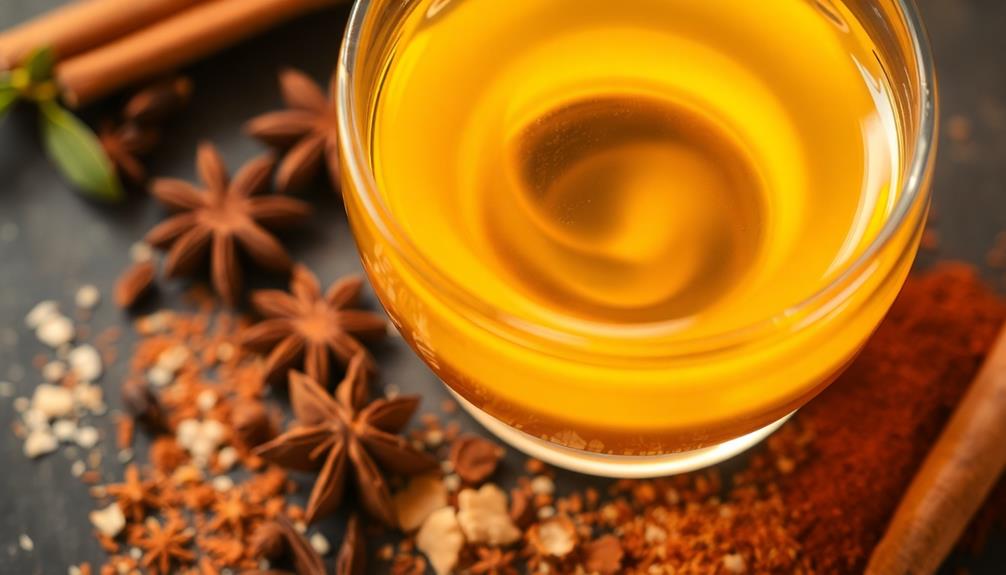Tej, the ancient and celebrated honey wine of Ethiopia, has been cherished for thousands of years as a symbol of hospitality and community. This unique beverage is crafted by fermenting raw, high-quality honey with water, spices, and herbs, resulting in a flavor profile that ranges from sweet to slightly tart. The creation of tej is a time-honored tradition, with generations refining the process to achieve the perfect balance. Sharing this honey wine is a cherished cultural ritual, making it integral to Ethiopian social gatherings and celebrations. If you're intrigued to learn more about the fascinating history and art of tej, there's much more to discover.
Key Takeaways
- Tej is an ancient honey wine with roots in the Horn of Africa, integral to Ethiopian culture, religious and social ceremonies for thousands of years.
- The unique flavor profile of tej ranges from sweet to slightly tart, achieved through a refined fermentation process using high-quality, raw honey.
- The making of tej involves combining honey and water, fermenting the mixture, racking, aging, and bottling the final product to develop complex flavors.
- The bottle-aging process of tej enhances its flavor profile, reflecting the art and science of mead-making and the rich heritage of traditional craftsmanship.
- Tasting aged tej allows for a deeper appreciation of the cultural significance and dedication evident in each bottle of this Ethiopian honey wine.
History
Tej, the ancient honey wine of Ethiopia, traces its roots back to the dawn of human civilization in the Horn of Africa. For thousands of years, this unique beverage has been a cherished part of Ethiopian culture, with its origins firmly rooted in the country's rich history and traditions.
The story of tej begins with the indigenous people of Ethiopia, who discovered the wonders of fermenting honey into a delightful alcoholic drink. This process was likely refined over generations, as the locals learned to expertly balance the sweetness of honey with the tangy notes of various spices, creating a harmonious and complex flavor profile.
As the centuries passed, tej became deeply intertwined with religious and social ceremonies, playing a pivotal role in celebrations, religious rituals, and daily life.
Today, the creation and enjoyment of tej remain an integral part of Ethiopian heritage, connecting the present to the rich tapestry of the past.
Recipe
Tej, or honey wine, is a traditional alcoholic beverage originating from Ethiopia and Eritrea. It's made by fermenting honey with water and sometimes spices or herbs. Tej has a unique flavor profile, ranging from sweet to slightly tart, and can be enjoyed on its own or used in various cultural dishes.
The process of making tej can be time-consuming, as it requires patience and attention to detail. However, the result is a delightful and refreshing drink that showcases the natural sweetness and complexity of honey.
Ingredients:
- 1 cup (340g) of pure, raw honey
- 4 cups (950ml) of filtered or spring water
- 1 teaspoon of dry active yeast
- 1 cinnamon stick (optional)
- 3 whole cloves (optional)
- 1 inch (2.5cm) piece of ginger, peeled and sliced (optional)
Instructions:
In a clean, sterilized glass jar or carboy, combine the honey and water. Stir well until the honey is fully dissolved.
Add the yeast and any optional spices, if desired. Cover the container with a clean cloth or airlock, and let the mixture ferment at room temperature for 2-4 weeks, or until the desired level of carbonation and sweetness is achieved.
Strain the tej through a fine-mesh sieve to remove any sediment or spices, and transfer the clear liquid to a clean bottle or container. Store in a cool, dark place and enjoy your homemade tej!
When making tej, it's important to use high-quality, raw honey, as it will impart the most authentic flavor.
Additionally, be patient during the fermentation process, as it can take several weeks for the honey wine to develop its unique characteristics.
Cooking Steps
To make tej, you'll first need to combine the honey and water.
Then, let the honey-water mixture ferment until it's nice and bubbly.
After that, you'll rack the fermented liquid into a clean container to age it.
Step 1. Combine Honey and Water

To make Tej, you'll need to combine a specific ratio of honey and water. The traditional recipe calls for a 1:3 ratio of honey to water.
Start by selecting a high-quality, flavorful honey. Measure out one part honey and three parts filtered or spring water. Gently warm the honey in a saucepan until it becomes more fluid, making it easier to blend.
Slowly pour the honey into the water, stirring continuously to ensure the mixture is well combined. Avoid using boiling water, as this can damage the delicate honey flavor.
Once the honey and water are fully incorporated, transfer the mixture to a fermentation vessel, such as a glass carboy or plastic bucket. This vessel should be clean and sanitized before transferring the honey-water mixture to it. Once in the fermentation vessel, you can add your chosen yeast and any additional ingredients, such as fruit, spices, or other flavorings, to create your desired layered fruit juice recipe. Make sure to seal the vessel tightly and store it in a cool, dark place to allow the fermentation process to take place.
Cover the container with a breathable cloth or airlock to allow the fermentation process to begin.
Over the next several weeks, the natural yeasts in the honey will convert the sugars into alcohol, transforming the sweet liquid into the distinctive Tej.
Step 2. Ferment the Honey-Water Mixture

With the honey-water mixture ready, it's time to let the fermentation process begin. First, you'll need to find a clean, sterilized container with an airlock lid. This will allow the carbon dioxide to escape while preventing air from getting in.
Carefully pour the honey-water into the container, leaving a few inches at the top for the mixture to expand as it ferments.
Next, add your yeast. You can use a specific wine yeast or even a baker's yeast, depending on the flavor profile you're going for.
Gently stir the yeast into the liquid until it's fully dissolved. Secure the airlock lid, and you're all set!
Over the next few weeks, the yeast will consume the sugars in the honey, converting them into alcohol. You'll see bubbles and activity as the fermentation takes place.
Once the bubbling slows down, it's time to siphon the wine off the sediment and transfer it to a new, clean container.
Continue this process until the fermentation is complete and the wine is clear and ready to bottle.
Step 3. Rack the Fermented Mixture

After several weeks, the fermentation process should have significantly slowed.
It's now time to "rack" the fermented mixture, which means transferring the liquid into a new container, leaving behind the sediment that has accumulated at the bottom.
This step helps clarify the honey wine, removing impurities and allowing it to continue aging.
Carefully siphon or pour the liquid into a clean, sanitized carboy or other suitable vessel, leaving the sediment behind.
Be gentle to avoid stirring up the lees.
Once the liquid has been transferred, you can discard the sediment.
Next, seal the carboy and store it in a cool, dark place to continue aging.
Over the next several months, the honey wine will slowly clear and develop its distinctive flavor.
Periodically check the airlock to ensure it's still functioning properly.
With patience and care, you'll soon have a delicious batch of homemade tej, or honey wine, to enjoy.
Step 4. Age the Fermented Mixture

Aging the fermented mixture is the next crucial step in crafting your homemade honey wine. After racking the liquid off the sediment, you'll need to let the wine age for several months. This allows the flavors to meld and the wine to clarify further.
Find a cool, dark place to store your fermenting honey wine. A basement or cellar works well, as the consistent temperature helps the aging process. Check on your wine periodically, ensuring the airlock remains functional and topping up the headspace with more wine if needed.
Over time, the wine will slowly clear, and the flavors will become more complex and balanced. Depending on your recipe, you may want to age the wine for 3-6 months or even longer.
When the wine reaches your desired flavor profile, it's time to bottle and enjoy your homemade tej!
Step 5. Bottle the Aged Mead

Once your honey wine has reached the desired flavor and clarity through aging, it's time to bottle your homemade tej.
Gather your clean, sanitized bottles and ensure they're dry. Use a siphon or ladle to carefully transfer the aged mead from the fermentation vessel into the bottles, leaving behind any sediment at the bottom. Fill each bottle, leaving about an inch of headspace at the top.
Cap or cork the bottles securely. For a festive touch, you can add a decorative label or wax seal to the tops.
Store the bottled tej in a cool, dark place, such as a cellar or wine fridge. This will help preserve the flavor and prevent oxidation.
When ready to enjoy, chill the bottles and pour into glasses. The aging process has transformed your honey wine into a flavorful, complex beverage perfect for celebrations or quiet moments.
Sip and savor the fruits of your labor!
Final Thoughts
As you've explored the depth and complexity of tej, the captivating Ethiopian honey wine, it's time to reflect on your journey. Through the intricate process of bottle-aging this traditional beverage, you've gained a deeper appreciation for the art and science behind its creation.
The final thoughts on tej are twofold: First, the patience and attention to detail required in properly aging this mead can't be overstated. The rewards, however, are immense, as the flavors develop and mature, creating a harmonious balance that delights the senses.
Secondly, the cultural significance of tej extends beyond its taste, as it serves as a symbol of Ethiopian hospitality and community. Sharing a glass of this unique honey wine is a cherished tradition, fostering connections and celebrating life's important moments.
As you savor the final sips of your aged tej, remember the journey that led you here. The dedication and passion poured into each bottle are a testament to the rich heritage of this captivating elixir.
Frequently Asked Questions
Is Tej Safe for Consumption During Pregnancy?
You should avoid drinking any alcoholic beverages, including tej, during pregnancy. Alcohol can harm the developing baby and is not considered safe for consumption at any stage of pregnancy. Consult your healthcare provider for personalized guidance.
How Long Does Tej Last Before It Spoils?
How long your homemade beverage lasts before spoiling depends on several factors, like the ingredients and storage conditions. Generally, it's best to consume it within a few weeks for optimal freshness and safety.
Can Tej Be Used in Cooking or Baking?
You can certainly use this fermented honey beverage in your cooking and baking. It adds a unique, complex flavor that can enhance both sweet and savory dishes. Give it a try for an interesting twist on your recipes.
Does Tej Contain Any Health Benefits?
Yes, honey-based beverages like tej can offer several health benefits. They contain antioxidants, vitamins, and minerals that may support immune function, gut health, and even skin health. Just be mindful of the alcohol content when incorporating tej into your diet.
Can Tej Be Purchased Online or in Stores?
You can purchase tej online from various specialty stores and websites that offer Ethiopian and African beverages. It may also be available in some international grocery stores or ethnic markets, depending on your location.
